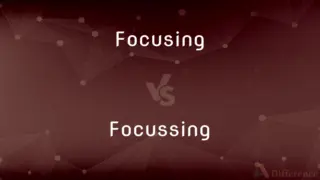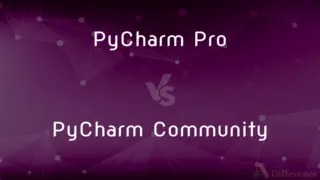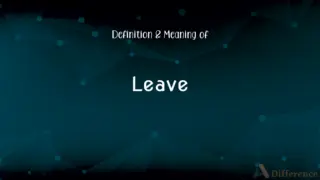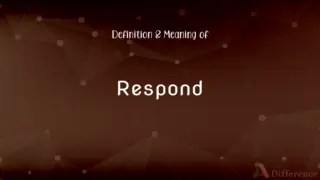Active Learning vs. Passive Learning — What's the Difference?
Edited by Tayyaba Rehman — By Fiza Rafique — Published on December 2, 2023
Active Learning involves students engaging and participating directly. Passive Learning is more about receiving information without active involvement.

Difference Between Active Learning and Passive Learning
Table of Contents
ADVERTISEMENT
Key Differences
Active Learning and Passive Learning are two educational strategies with distinct characteristics. Active Learning encourages students to actively engage in their educational process, such as through discussions or group work. On the other hand, Passive Learning primarily involves students listening or reading without immediate application or feedback.
In Active Learning, the responsibility of understanding rests with the students. They interact, question, and apply what they're learning. In contrast, Passive Learning is like a one-way street where the teacher lectures, and the students quietly absorb, often without immediate processing or engagement.
Active Learning can often be more dynamic and adaptive, tailoring to students' needs. It might involve problem-solving sessions, peer teaching, or hands-on activities. Passive Learning, while less interactive, can be beneficial for straightforward content delivery, like lectures or reading assignments.
Research suggests that Active Learning can lead to better retention and understanding since students are not just memorizing but also applying and analyzing information. Passive Learning can be efficient for covering vast amounts of content, but it might not always guarantee depth of understanding.
Overall, while Active Learning promotes deeper understanding through engagement, Passive Learning offers a more traditional approach of information delivery without immediate application.
ADVERTISEMENT
Comparison Chart
Engagement
High: students participate actively
Low: students mostly listen or read
Responsibility for Learning
Shared between teacher and student
Primarily on the teacher
Typical Activities
Discussions, projects, group work
Lectures, reading assignments
Feedback
Immediate and continuous
Often delayed or minimal
Outcome
Deeper understanding, application
Memorization, broad coverage
Compare with Definitions
Active Learning
Encouraging critical thinking and problem-solving.
Active Learning sessions enhanced students' analytical skills.
Passive Learning
Minimal student engagement during instruction.
Passive Learning methods, like reading, required post-class engagement.
Active Learning
An approach where students directly engage in the learning process.
In the science lab, Active Learning involved students conducting experiments.
Passive Learning
Learning that primarily involves listening or reading.
Passive Learning was common in history classes with long lectures.
Active Learning
Prioritizing student participation and feedback.
Active Learning workshops ensured immediate feedback on tasks.
Passive Learning
Often lacks immediate feedback or application.
Passive Learning in online courses sometimes missed instant interactions.
Active Learning
Learning through hands-on or interactive activities.
Active Learning techniques, like group projects, fostered collaboration.
Passive Learning
A method where students receive information without immediate interaction.
During the lecture, Passive Learning was evident as students took notes.
Active Learning
Students taking an active role in their education.
Through Active Learning, students led the class discussion.
Passive Learning
Relying on traditional instructional methods.
With Passive Learning, the teacher delivered content while students absorbed.
Common Curiosities
Can lectures be part of Passive Learning?
Yes, traditional lectures where students mainly listen are a form of Passive Learning.
Is Passive Learning always less effective than Active Learning?
Not always; it depends on the content and context. Some topics may be better suited for Passive Learning.
What's the main characteristic of Active Learning?
It involves students participating and engaging directly in the learning process.
Can technology facilitate Active Learning?
Absolutely, tools like interactive platforms can promote student engagement.
Is reading a textbook an example of Passive Learning?
Typically, yes, as it doesn't involve immediate application or feedback.
Are workshops a form of Active Learning?
Generally, yes, as they involve hands-on activities and direct participation.
How does Active Learning benefit students?
It promotes deeper understanding, critical thinking, and better retention.
Can Passive Learning lead to information overload?
It can, especially if there's limited engagement or interaction to process the information.
Do all students prefer Active Learning over Passive Learning?
Preferences vary. Some students might prefer traditional lectures, while others thrive in interactive settings.
Is Active Learning more suited for certain subjects?
While it can be applied universally, subjects requiring application and analysis might benefit more.
Do online courses promote Passive Learning?
It depends on the course design. While some might be passive, others incorporate active engagements.
How do group projects fit into Active Learning?
They're a prime example, as students actively collaborate, discuss, and apply knowledge.
Can Passive Learning be self-paced?
Often, yes. Students can learn at their own speed, especially with recorded lectures or readings.
Can a classroom have both Active and Passive Learning elements?
Absolutely, a blended approach can cater to diverse learning needs.
How can teachers transition from Passive to Active Learning?
By incorporating discussions, group activities, and hands-on tasks into their curriculum.
Share Your Discovery

Previous Comparison
Microsoft NPS vs. Cisco ISE
Next Comparison
Carbon Steel vs. Mild SteelAuthor Spotlight
Written by
Fiza RafiqueFiza Rafique is a skilled content writer at AskDifference.com, where she meticulously refines and enhances written pieces. Drawing from her vast editorial expertise, Fiza ensures clarity, accuracy, and precision in every article. Passionate about language, she continually seeks to elevate the quality of content for readers worldwide.
Edited by
Tayyaba RehmanTayyaba Rehman is a distinguished writer, currently serving as a primary contributor to askdifference.com. As a researcher in semantics and etymology, Tayyaba's passion for the complexity of languages and their distinctions has found a perfect home on the platform. Tayyaba delves into the intricacies of language, distinguishing between commonly confused words and phrases, thereby providing clarity for readers worldwide.













































